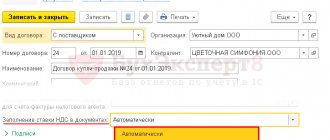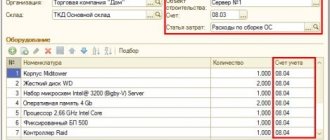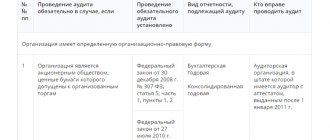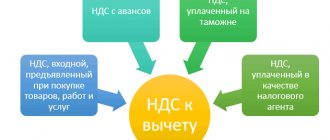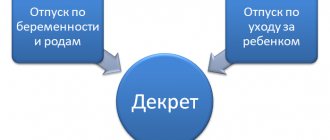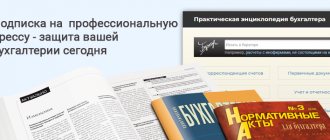VAT (value added tax) is the most difficult tax to understand, calculate and pay, although if you do not delve deeply into its essence, it will not seem very burdensome for a businessman, because is an indirect tax. Indirect tax, unlike direct tax, is transferred to the final consumer.
Each of us can see the total amount of the purchase and the amount of VAT in the receipt from the store, and it is we, as consumers, who ultimately pay this tax. In addition to VAT, indirect taxes include excise taxes and customs duties. To understand the complexity of VAT administration for its payer, you will need to understand the main elements of this tax.
VAT elements
The objects of VAT taxation are:
- sale of goods, works, services on the territory of Russia, transfer of property rights (the right to claim debt, intellectual rights, rental rights, the right to permanent use of land, etc.), as well as gratuitous transfer of ownership of goods, results of work and provision of services. A number of transactions specified in paragraph 2 of Article 146 of the Tax Code of the Russian Federation are not recognized as objects of VAT taxation;
- carrying out construction and installation work for own consumption;
- transfer for one's own needs of goods, works, services, the costs of which are not taken into account when calculating income tax;
- importation of goods into the territory of the Russian Federation.
Free tax consultation
The goods and services listed in Article 149 of the Tax Code of the Russian Federation are not subject to VAT. Among them there are socially significant ones, such as: sales of certain medical goods and services; nursing and child care services; sale of religious items; passenger transportation services; educational services, etc. In addition, these are services in the securities market; Bank operations; insurer services; legal services; sale of residential buildings and premises; public utilities.
The VAT tax rate can be 0%, 10% and 20%. There is also the concept of “settlement rates”, equal to 10/110 or 20/120. They are used in operations specified in paragraph 4 of Article 164 of the Tax Code of the Russian Federation, for example, when receiving advance payment for goods, work, services. All situations in which certain tax rates are applied are given in Article 164 of the Tax Code of the Russian Federation.
Export transactions are subject to a zero tax rate; pipeline transport of oil and gas; electricity transmission; transportation by rail, air and water transport. At a 10% rate – some food products; most products for children; medicines and medical products that are not included in the list of essential and vital; breeding cattle. For all other goods, works and services, the VAT rate is 20%.
Calculate the VAT amount using a calculator
The VAT tax base is generally equal to the cost of goods, works, and services sold, taking into account excise taxes for excisable goods (Article 154 of the Tax Code of the Russian Federation). At the same time, articles 155 to 162.1 of the Tax Code of the Russian Federation provide details for determining the tax base separately for different cases:
- transfer of property rights (Article 155);
- income from mandate, commission or agency agreements (Article 156);
- when providing transportation services and international communication services (Article 157);
- sale of an enterprise as a property complex (Article 158);
- carrying out construction and installation work and transferring goods (performing work, providing services) for one’s own needs (Article 159);
- importation of goods into the territory of the Russian Federation (Article 160);
- when selling goods (work, services) on the territory of the Russian Federation by taxpayers - foreign persons (Article 161);
- taking into account the amounts associated with settlements for payment for goods, works, services (Article 162);
- during the reorganization of organizations (Article 162.1).
Tax period , that is, the period of time at the end of which the tax base is determined and the amount of tax payable under VAT is calculated, is a quarter.
Russian organizations and individual entrepreneurs, as well as those who move goods across the customs border, that is, importers and exporters, are recognized as VAT payers Taxpayers working under special tax regimes: simplified taxation system and PSN (except for cases when they import goods into the territory of the Russian Federation) and participants in the Skolkovo project do not pay VAT. Payers of the Unified Agricultural Tax from 2022 are also required to pay VAT, but they have the right to receive an exemption from paying it if their annual income does not exceed 60 million rubles.
In addition, taxpayers who meet the requirements of Article 145 of the Tax Code of the Russian Federation can receive an exemption from VAT: the amount of revenue from the sale of goods, work, and services for the three previous months, excluding VAT, did not exceed two million rubles. The exemption does not apply to individual entrepreneurs and organizations selling excisable goods.
Output VAT. Reflection of implementation. Sales book
To further consider the issue, we will reflect the sale of the purchased goods and select VAT - the “Sales” menu item, and create a new document in the document log “Sales (acts, invoices)”.
Fig. 19 Menu item “Sales”
Having filled out the header of the document, we will select the sold product “Desk” in the tabular part. And for example, we will indicate the quantity that we purchased - 5 pieces, but our selling price will be 3,000 rubles, for a total amount of 15,000 rubles. The table highlights VAT - 2500 rubles.
Fig. 20 Filling out the document “Sales of goods (invoice)”
Let's see how it affected the accounting accounts when posting the document - the "Dt/Kt" button.
Fig. 21 Movements of the document “Implementation (act, invoice)”
During the process, transactions were generated reflecting:
- Write-off of the cost of our tables 6666.67 rubles on credit 41.01 “Goods in warehouses” and immediately reflected in the debit 90.02 “Cost of sales”;
- Proceeds from sales - 15,000 rubles on credit 90.01 “Revenue” and the buyer’s debt is immediately reflected in debit 62.01 “Settlements with buyers and customers”;
- Debt to pay VAT in the amount of 2,500 rubles to the budget under credit 68.02 “VAT”, in correspondence with debit 90.03 “VAT”.
On the second tab of “Document Movements” we see an entry in the “VAT Sales” register, which ensures that sales are included in the “Sales Book”.
Fig. 22 Entry in the “Sales VAT” register
Let’s create a “Sales Book” through the menu item “Reports” - “VAT”.
Fig. 23 Menu item “Sales” - “VAT”
By clicking the “Generate” button, we get our report.
Fig.24 “Sales Book” report
What is a VAT deduction
At first glance, since VAT must be charged on the sale of goods, works, and services, it is no different from sales tax (turnover). But if we return to its full name - “value added tax”, then it becomes clear that not the entire sales amount should be subject to it, but only the added value . Added value is the difference between the cost of goods, works, services sold and the costs of purchasing materials, raw materials, goods, and other resources spent on them.
This makes clear the need to obtain a VAT tax deduction. The deduction reduces the amount of VAT accrued upon sale by the amount of VAT that was paid to the supplier when purchasing goods, works, and services. Let's look at an example.
Organization “A” purchased goods from organization “B” for resale at a cost of 7,000 rubles per unit. The VAT amount was 1,400 rubles (at a rate of 20%), the total purchase price was 8,400 rubles. Next, organization “A” sells the product to organization “C” for 10,000 rubles per unit. VAT on sales is equal to 2,000 rubles, which organization “A” must transfer to the budget. In the amount of 2,000 rubles, the VAT (1,400 rubles) that was paid during the purchase from organization “B” is already “hidden”.
In fact, the obligation of organization “A” to the budget for VAT is only 2,000 – 1,400 = 600 rubles, but this is provided that the tax authorities offset this input VAT, that is, provide the organization with a tax deduction. Receiving this deduction is accompanied by many conditions; below we will consider them in more detail.
In addition to deducting VAT amounts paid to suppliers when purchasing goods, works, services, VAT on sales can be reduced by the amounts specified in Article 171 of the Tax Code of the Russian Federation. This is VAT paid when importing goods into the territory of the Russian Federation; when returning goods or refusing to perform work or provide services; when the cost of shipped goods (work performed, services provided) decreases, etc.
VAT accounting analysis
Let’s create SALT for account 68.02 “VAT” and see how the situation has changed.
Fig. 25 SALT for account 68.02 “VAT”
- Turnover on the debit of the account – 1333.33 (input tax receipts);
- Turnover on account credit 2500 (coming from sales);
- The account credit balance is 1166.67 (the amount to be transferred to the budget for the 1st quarter of 2022).
For a more detailed examination of the corresponding accounts, you can generate the “Account Analysis” report, also located in the “Reports” - “Standard Reports” menu item.
Fig.26 “Account Analysis” report
In the menu “Reports” - “Accounting Analysis”, “VAT Accounting Analysis” is available. Having generated the report, we can clearly see the picture of our VAT activities. All cells are decrypted by double clicking the mouse.
Fig. 27 Go to the section “Analysis of VAT accounting”
Fig. 28 Analysis of VAT accounting
Conditions for obtaining input VAT deduction
So, what conditions must a taxpayer fulfill in order to reduce the amount of VAT upon sale by the amount of VAT that was paid to suppliers or when importing goods into the territory of the Russian Federation?
1. Purchased goods, works, services must have a connection with objects of taxation (Article 171(2) of the Tax Code of the Russian Federation). Tax authorities often ask the question: will these purchased goods actually be used in transactions subject to VAT? Another similar question is whether there is an economic justification (orientation to making a profit) when purchasing these goods, works, services? That is, the tax authority is trying to refuse to receive a tax deduction for VAT, based on its assessment of the feasibility of the taxpayer’s activities, although this does not apply to the mandatory conditions for deducting input VAT. As a result, VAT payers file many lawsuits against unfounded refusals to receive deductions in this regard.
2. Purchased goods, works, and services must be registered (Article 172(1) of the Tax Code of the Russian Federation).
3. Availability of a correctly executed invoice . Article 169 of the Tax Code of the Russian Federation provides requirements for the information that must be indicated in this document. When importing, instead of an invoice, the fact of VAT payment is confirmed by documents issued by the customs service.
4. Until 2006, in order to receive a deduction, there was a mandatory condition for the actual payment of the VAT amount. Now, Article 171 of the Tax Code of the Russian Federation provides only three situations in which the right to deduction arises in relation to the VAT paid: when importing goods; on business travel and entertainment expenses; paid by tax agent buyers. For other situations, the turnover of “tax amounts presented by sellers” applies.
5. Prudence and caution when choosing a counterparty. About “Who is responsible for an unscrupulous counterparty?” we have already told you. Refusal to receive a VAT tax deduction may also be caused by your connection with a suspicious counterparty. If you want to reduce the VAT that you must pay to the budget, we recommend that you conduct a preliminary check of your transaction partner.
6. Isolation of VAT as a separate line. Article 168 (4) of the Tax Code of the Russian Federation requires that the amount of VAT in settlement and primary accounting documents, as well as in invoices, be highlighted as a separate line. Although this condition is not mandatory to receive a tax deduction, it is necessary to monitor its presence in the documents so as not to cause tax disputes.
7. Timely issuance of invoices by the supplier. According to Article 168 (3) of the Tax Code of the Russian Federation, an invoice must be issued to the buyer no later than five calendar days, counting from the day of shipment of goods, performance of work, provision of services. Surprisingly, even here the tax authorities see a reason for refusing the buyer a tax deduction, although this requirement applies only to the seller (supplier). The courts on this issue take the position of the taxpayer, reasonably noting that the five-day period for issuing an invoice is not a prerequisite for a deduction.
8. Conscientiousness of the taxpayer himself. Here it is already necessary to prove that the VAT payer himself, who wants to receive a deduction, is a bona fide taxpayer. The reason for this is the same resolution of the Plenum of the Supreme Arbitration Court of October 12, 2006 N 53, which defines the “defects” of the counterparty. Paragraphs 5 and 6 of this document contain a list of circumstances that may indicate the unjustification of a tax benefit (and the deduction of input VAT is also a tax benefit). Suspicious, in the opinion of YOU, are:
- the impossibility of the taxpayer actually carrying out business transactions;
- lack of conditions for achieving the results of relevant economic activities;
- carrying out transactions with goods that were not produced or could not be produced in the specified volume;
- accounting for tax purposes only those business transactions that are associated with obtaining tax benefits.
These are conditions that are quite harmless at first glance, such as: the creation of an organization shortly before a business transaction; one-time nature of the operation; use of intermediaries in transactions; carrying out the transaction at a location other than the taxpayer's location.
Based on this resolution, tax inspectors acted very simply - they refused to receive a VAT deduction, simply listing these conditions. The zeal of its employees had to be restrained by the Federal Tax Service itself, because... the number of those “unworthy” of receiving tax benefits simply went off scale. In the letter dated 05.24.11 No. SA-4-9/8250 FTS about
9. Additional conditions for obtaining a VAT tax deduction may include a number of requirements from tax authorities for the preparation of documents (accusations of incompleteness, unreliability, and contradiction of the specified information are typical); to the profitability of the activities of the VAT payer; an attempt to re-qualify contracts, etc. If you are sure that you are right, in all these cases it is worth at least appealing the decisions of the tax authorities to refuse to receive a VAT tax deduction in a higher tax authority.
How to correctly apply the estimated VAT rate
The use of the estimated VAT rate - 18%/118% or 10%/110% - is stipulated in Article 164, paragraph 4 of the Tax Code of the Russian Federation and is allowed in the following situations:
- when issuing an invoice for the received advance payment;
- when calculating VAT by a tax agent;
- when using an assignment agreement (assignment of monetary claims).
The calculation assumes that the amount of the advance received or the monetary claim accepted already includes the amount of tax, which should be calculated by simple arithmetic operations.
The most common option for isolating the VAT amount is to draw up an invoice for the advance received.
VAT on export
As we have already said, when exporting goods, their sale is taxed at a rate of 0%. The company must justify the right to such a rate by documenting the fact of export. To do this, along with the VAT return, you must submit a package of documents to the tax office (copies of the export contract, customs declarations, transport and shipping documents with customs marks).
The VAT payer is given 180 days from the date the goods are placed under export customs procedures to submit these documents. If the necessary documents are not collected within this period, then VAT will have to be paid at a rate of 10% or 20%.
VAT on import
When importing goods into the territory of the Russian Federation, importers pay VAT at customs, which is calculated as part of customs payments (Article 318 of the Customs Code of the Russian Federation). An exception is the import of goods from the Republic of Belarus and the Republic of Kazakhstan; in these cases, payment of VAT is formalized at the tax office in Russia.
Please note that when importing goods into Russia, VAT is paid by all importers, including those working under special tax regimes (USN, Unified Agricultural Tax, PSN), and those who are exempt from paying VAT under Article 145 of the Tax Code of the Russian Federation.
The VAT rate for imports is 10% or 20%, depending on the type of goods. An exception is the goods specified in Article 150 of the Tax Code of the Russian Federation, for the import of which VAT is not charged. The tax base on which VAT will be charged when importing goods is calculated as the total sum of the customs value of goods, customs duties and excise taxes (for excisable goods).
The tax base
Determine the tax base in accordance with Articles 154–159, 161–162 of the Tax Code of the Russian Federation. For more information on determining the tax base for specific transactions, see:
- How to calculate VAT on the sale of goods (works, services);
- How to calculate VAT on the sale of property rights;
- How to calculate VAT when transferring goods (work, services) free of charge;
- How to calculate VAT when transferring goods for your own needs;
- How to calculate VAT on construction and installation work for your own consumption.
VAT under simplified tax system
Although simplifiers are not VAT payers, issues related to this tax nevertheless arise in their activities.
First of all, why do OSNO taxpayers not want to work with suppliers on the simplified tax system? The answer here is that the supplier on the simplified tax system cannot issue an invoice to the buyer with allocated VAT, which is why the buyer on the OSNO will not be able to apply a tax deduction for the amount of input VAT. The solution here is possible in reducing the selling price, because unlike suppliers on the general taxation system, simplifiers do not have to charge VAT on sales.
Sometimes simplifiers still issue the buyer an invoice with a allocated VAT, which obliges them to pay this VAT and submit a declaration. The fate of such an invoice may be controversial. Inspections often deny buyers a tax deduction, citing the fact that simplifiers are not VAT payers (even though they actually paid VAT). True, most courts in such disputes support the right of buyers to deduct VAT.
If, on the contrary, a simplifier buys goods from a supplier working on OSNO, then he pays VAT, for which he cannot receive a deduction. But, according to Article 346.16 of the Tax Code of the Russian Federation, a taxpayer using a simplified system can take into account input VAT in his expenses. This, however, only applies to payers of the simplified tax system Income minus expenses, because On the simplified tax system, income does not take into account any expenses.
How to use the VAT calculator
Such a calculation is the most popular in business, and government procurement is no exception; it is a rare participant who does without it.
In one of the articles, we described in detail how to correctly account for this tax payment in 2022. Calculating manually using formulas is a rather long process, which is often associated with computational errors. The easiest and surest way to find out how to separate VAT from the amount is to use our online calculator. It's very easy to use. To calculate, you will need to know two values: amount and rate. Step 1. Enter the required number in the input line.
Step 2. Select the desired bet. For example, you are puzzled by the question of how to calculate 10%. To do this, just change the tax value in the rate indicator line to the desired value. The required totals will be automatically calculated in 10% increments.
Step 3. Click on the “Calculate” button of the online VAT calculator. The results will be displayed below it: accrued, allocated tax and the total with and without it.
VAT return and tax payment
The VAT return must be submitted at the end of each quarter, no later than the 25th day of the next month, that is, no later than the 25th of April, July, October and January, respectively. Reporting is accepted only in electronic form; if it is presented on paper, it is not considered submitted.
The procedure for paying VAT differs from other taxes. The tax amount calculated for the reporting quarter must be divided into three equal parts, each of which must be paid no later than the 25th day of each of the three months of the next quarter. For example, according to the results of the first quarter, the amount of VAT payable amounted to 90 thousand rubles. We divide the tax amount into three equal parts of 30 thousand rubles each, and pay it within the following deadlines: no later than April 25, May, June, respectively.
We draw the attention of all LLC-organizations can pay taxes only by non-cash transfer. This is a requirement of Art. 45 of the Tax Code of the Russian Federation, according to which the organization’s obligation to pay tax is considered fulfilled only after presentation of a payment order to the bank. The Ministry of Finance prohibits paying LLC taxes in cash.
Choose a profitable current account
If you did not manage to pay taxes or contributions on time, then in addition to the tax itself, you will also have to pay a penalty in the form of a penalty, which can be calculated using our calculator:
In this article we tried to give basic concepts about VAT. Unfortunately, this tax, like no other, is endless in its complexity. We recommend that you contact specialists when calculating and paying VAT. For example, get a free one-hour consultation from our partners from 1SBO.
VAT payable
The total amount of accrued VAT is determined based on the results of the tax period - quarter (Article 163 of the Tax Code of the Russian Federation).
The total tax amount can be reduced by the amount of input VAT minus the amounts recovered. As a result, calculate the amount of VAT payable to the budget using the formula:
| VAT payable | = | VAT to be charged | – | Input VAT accepted for deduction | + | VAT restored in the tax period |
Such rules are established in paragraph 1 of Article 173 of the Tax Code of the Russian Federation.


